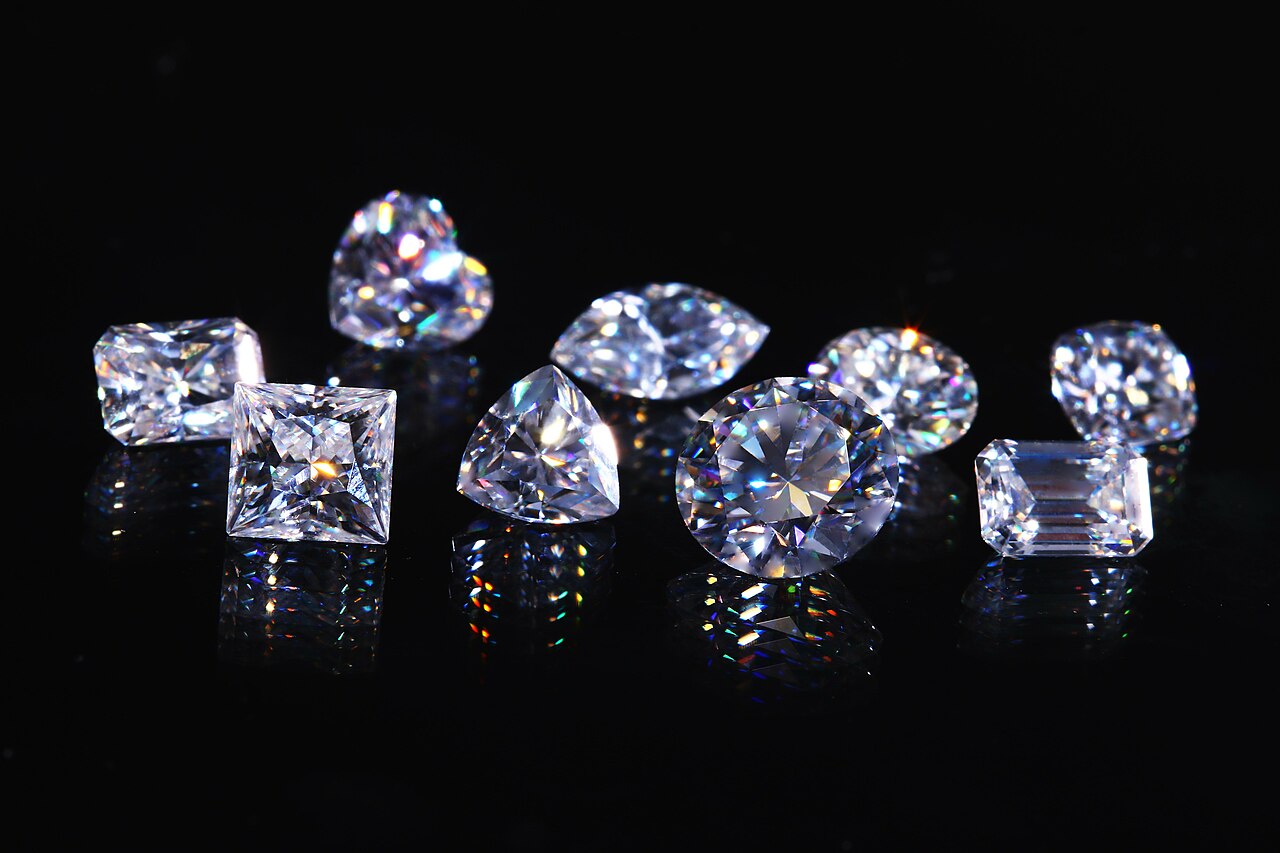Introduction: The Future of Diamonds
Diamonds have long been regarded as a symbol of love, commitment, and luxury. However, as consumers become more conscious of the environmental and ethical implications of their purchasing decisions, there has been a shift toward more sustainable and responsible alternatives. Lab-grown diamonds have emerged as a revolutionary option, providing the same beauty, brilliance, and durability as mined diamonds without the ethical dilemmas associated with traditional diamond extraction.

The rise of lab-grown diamonds reflects a broader trend in the jewelry industry toward more sustainable practices. As concerns about climate change, environmental degradation, and human rights violations grow, many consumers are opting for products that align with their values. Lab-grown diamonds not only meet the demand for high-quality diamonds but also offer a transparent and eco-friendly solution that has captured the attention of modern shoppers.
What Are Lab-Grown Diamonds?
Lab-grown diamonds, also known as man-made diamonds or synthetic diamonds, are diamonds that are created in a controlled laboratory environment. There are two primary methods used to create lab-grown diamonds: Chemical Vapor Deposition (CVD) and High Pressure High Temperature (HPHT).
- CVD involves using a carbon-rich gas, typically methane, to deposit carbon atoms onto a substrate, creating a diamond crystal.
- HPHT mimics the natural conditions that diamonds form under deep within the Earth, applying high pressure and temperature to carbon to produce diamond crystals.
The resulting diamonds are chemically, physically, and optically identical to natural diamonds. The only difference is their origin — while natural diamonds take millions of years to form beneath the Earth’s surface, lab-grown diamonds can be created in a matter of weeks.
The Ethical and Environmental Advantages of Lab-Grown Diamonds
As consumers become more aware of the environmental and social implications of their purchases, the ethical and environmental advantages of lab-grown diamonds are a significant draw. Unlike traditional mining, which involves extensive land disruption and has been linked to human rights abuses in certain regions, lab-grown diamonds are produced in a controlled environment, significantly reducing their ecological footprint.
Sustainability is a major concern for many consumers, and lab-grown diamonds offer a clear solution. They are produced with a fraction of the energy and resources required for mining. Additionally, many lab-grown diamonds are created using renewable energy sources, further reducing their environmental impact. These diamonds also avoid the harmful effects of diamond mining, such as habitat destruction, water contamination, and greenhouse gas emissions.
One of the most compelling reasons consumers are choosing lab-grown diamonds is their ethical advantages. The diamond mining industry has long been associated with exploitative practices, such as forced labor and the financing of armed conflicts. These “blood diamonds” have led many people to rethink their purchases. Lab-grown diamonds provide a conflict-free alternative, as they are produced without the social and environmental consequences of traditional diamond mining. As the demand for sustainable luxury grows, companies are increasingly embracing lab-grown diamonds to offer responsible choices to their customers.
The Growing Demand for Ethical and Sustainable Jewelry
As more consumers seek ethical alternatives, the market for lab-grown diamonds has seen significant growth. Reports indicate that millennials and Gen Z, in particular, are driving the demand for sustainable and ethically sourced products. Consumers are increasingly looking for ways to make purchases that align with their values, and lab-grown diamonds offer a compelling option.
The jewelry industry as a whole is undergoing a transformation, with many leading brands choosing to embrace lab-grown diamonds. These diamonds allow jewelers to offer high-quality, beautiful products while also promoting sustainability and ethical practices. Moreover, affordability is another key benefit — lab-grown diamonds are typically 20-40% less expensive than their mined counterparts, making them an attractive option for those seeking value without compromising on quality.
One company that stands at the forefront of this movement is Labrilliante. While their name is not mentioned in this article, it’s clear that many high-end jewelers are turning to lab-grown diamonds to offer consumers more sustainable and ethical options. Companies like Labrilliante are setting a new standard in the industry, showing that luxury and sustainability can coexist harmoniously.
How Lab-Grown Diamonds Compare to Mined Diamonds
When it comes to the 4Cs — cut, clarity, color, and carat weight — lab-grown diamonds are virtually indistinguishable from mined diamonds. They are graded using the same criteria, and consumers can expect the same brilliance, durability, and aesthetic appeal from both types of diamonds.
In terms of appearance, lab-grown diamonds are available in a wide range of cuts, from classic round brilliants to fancy shapes like emerald, oval, and cushion. Their clarity and color are often superior to mined diamonds, as lab-grown diamonds are created in a controlled environment where the conditions are carefully regulated. As a result, inclusions and imperfections, which are common in mined diamonds, are less likely to appear in lab-grown diamonds.
Despite their many benefits, some consumers still view lab-grown diamonds with skepticism. One common misconception is that lab-grown diamonds are of inferior quality compared to their mined counterparts. This simply isn’t true. Lab-grown diamonds undergo the same grading process as mined diamonds and are equally capable of standing the test of time.

The Future of Lab-Grown Diamonds
The future of lab-grown diamonds looks incredibly bright. As technology continues to advance, the process of creating these diamonds will become even more efficient, further reducing their environmental impact. The growing acceptance of lab-grown diamonds among consumers, coupled with increased demand for sustainable luxury goods, ensures that lab-grown diamonds will play a significant role in the jewelry market for years to come.
Moreover, as more companies like Labrilliante offer lab-grown diamonds, consumers will have even greater access to these beautiful, ethical, and affordable options. The industry is expected to continue evolving, with lab-grown diamonds becoming an increasingly popular choice for engagement rings, wedding bands, and other fine jewelry.
A Brilliant Choice for the Modern Consumer
Lab-grown diamonds offer a sustainable, ethical, and beautiful alternative to mined diamonds. With their growing popularity, these diamonds are helping to reshape the jewelry industry, offering consumers a way to enjoy luxury without compromising their values. As awareness of the environmental and ethical issues surrounding traditional diamond mining grows, it’s clear that lab-grown diamonds are here to stay.
For those seeking a diamond that is as beautiful as it is responsible, lab-grown diamonds represent the future of the jewelry industry. They provide a brilliant choice for the modern consumer who values sustainability, ethics, and quality — and they are set to become the new standard in diamond jewelry.